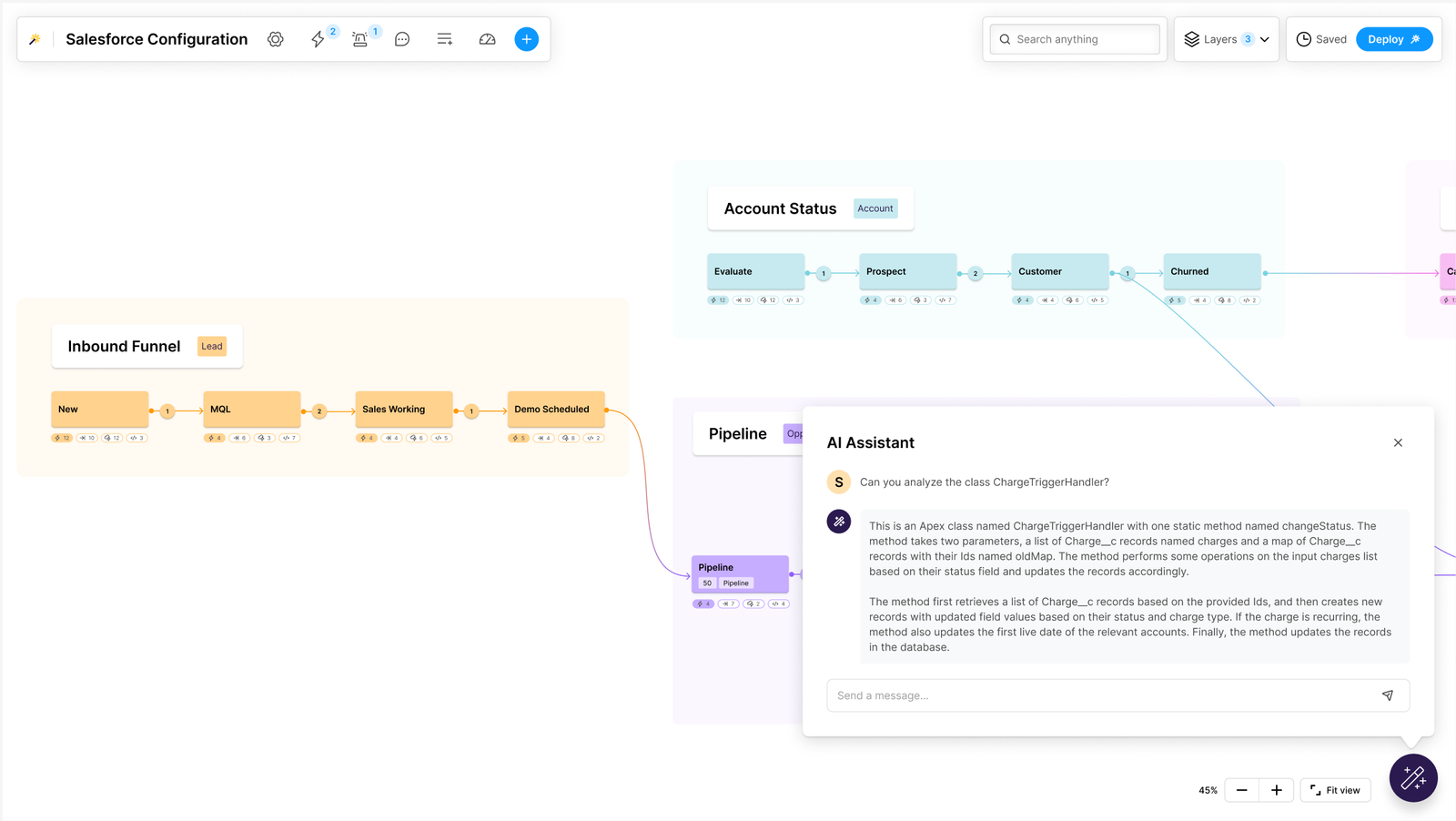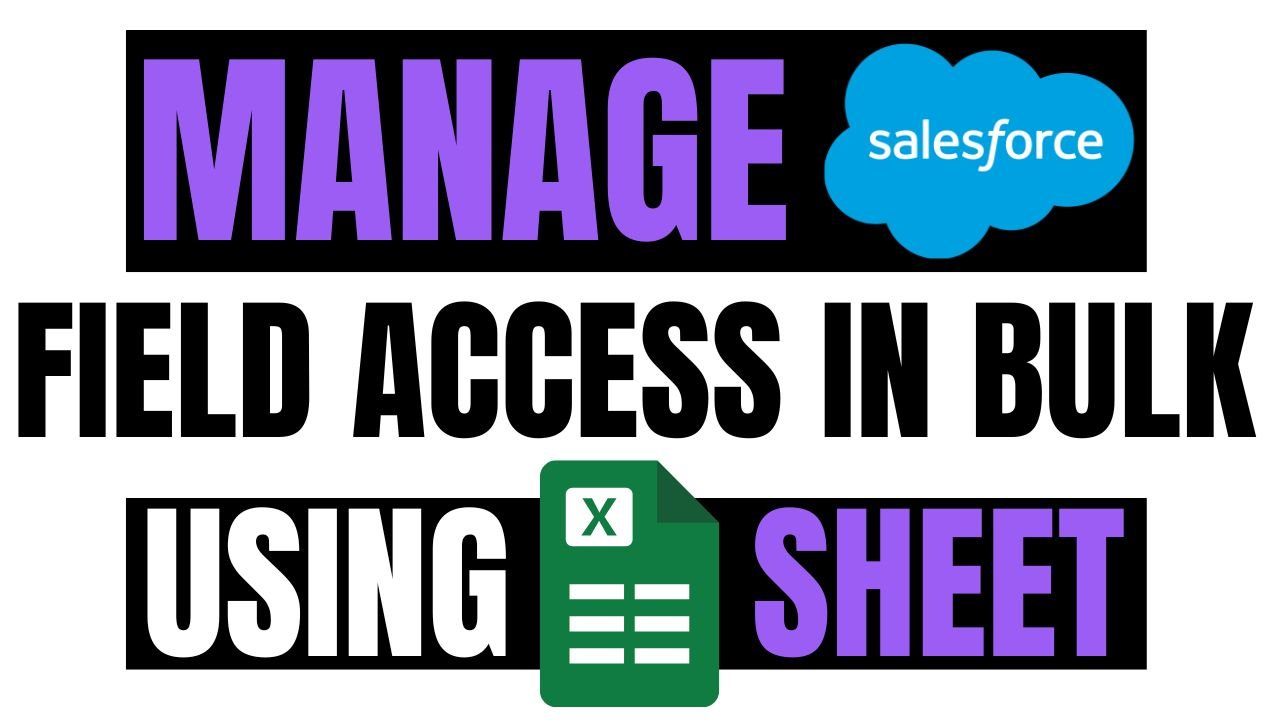Introduction
In the rapidly evolving landscape of Salesforce customization and automation, the emergence of no-code tools has been nothing short of a game-changer. These intuitive platforms empower businesses to optimize their Salesforce operations without the need for complex coding skills or extensive IT resources. From streamlining workflows to enhancing customer relationship management, the possibilities are boundless
Despite its potential, companies across all stages often find it challenging to keep pace with the evolving needs of their business using Salesforce
For early-stage enterprises, the process of building, configuring, and launching their initial Salesforce instance can span several months. Meanwhile, more established firms may grapple with a lack of clarity regarding the accumulated configurations and developments in their environment, leading to excessive time spent on routine upkeep.
The momentum slows to a crawl, as even seemingly straightforward modifications carry the risk of disrupting existing functionalities. As a consequence, strategic endeavors find themselves hindered, and Salesforce teams shift from proactive problem-solving to reactive fire-fighting.”
Salesforce Velocity- an operational state of mind
Picture a world where your Salesforce system runs smoothly, making everyday tasks a breeze for your team and strategic planning a cinch for your leaders. Imagine admins not just as tech experts, but as true business allies. Envision a place where users don’t need to find workarounds for processes that just don’t cooperate.
This is what we mean by Salesforce velocity. It’s about reaching a level of operational excellence that’s now more achievable than ever, thanks to Sweep. This handy tool lets companies reach this level without the huge time, money, and resource investments of the past.
The 3 challenges on the way for Salesforce Velocity
Visibility and Documentation
Mastering the configuration of your evolving Salesforce setup is a perpetual challenge, particularly for established companies constantly refining and expanding their existing infrastructure. The hurdles of visibility and documentation compound this challenge, often leading to inefficiencies like duplications, errors, and time-consuming processes. Without clear insight and thorough documentation, critical insights and potential enhancements remain concealed, ultimately impacting the overall effectiveness of your Salesforce operations.
Scoping, communication, and collaboration
Collaboration over Salesforce projects presents a unique set of challenges. Balancing the diverse expertise and perspectives of team members, each with their own priorities and approaches can be akin to orchestrating a complex symphony. Ensuring seamless communication, particularly when dealing with intricate technical details, demands a concerted effort. Moreover, integrating the business context, which is often missing, adds an additional layer of complexity. This gap in understanding can lead to a misalignment of objectives and solutions. Additionally, coordinating tasks, managing timelines, and aligning objectives across various departments and stakeholders can be a formidable task. Navigating these collaborative intricacies is crucial for the success of any Salesforce project, requiring clear communication channels, effective project management, and a shared understanding of the end goal.
Balancing between Native capabilities and integrated apps
Integrating various tools and applications with Salesforce introduces a significant challenge in itself. Often, these additions are not native to the Salesforce platform, creating a web of dependencies that can be complex to manage. This intricate interplay of non-native code solutions can lead to compatibility issues, potential bottlenecks, and a more challenging maintenance process. It’s a dilemma that many organizations grapple with, especially when considering new additions to their revenue tech stack. The perennial question arises: “Can’t we build it on Salesforce?” The response, invariably, is “Yes, but it’s hard and time-consuming.” Striking the right balance between leveraging existing tools and achieving seamless integration within Salesforce remains a critical challenge for businesses aiming to optimize their operations.
Introducing Sweep.io- A new, modern way to accelerate Salesforce Velocity.
Sweep.io is a new product in the Salesforce ecosystem that aims to bridge the gap between Salesforce technical users and business users.
Sweep’s visual interface creates immediate visualization of your salesforce processes with real-time documentation and dependency mapping of everything in your architecture. Additionally, an AI chatbot will help dive deeper into how objects are built and the potential impact of changes.
With Sweep’s collaborative canvas, teams can seamlessly discuss new processes, propose adjustments, and provide feedback within a unified workspace. Say goodbye to the hassle of converting flow charts and documents into technical scopes—now, it’s one shared reality for every business user.
Sweep revolutionizes the buy vs. build debate, enabling teams to harness Salesforce capabilities such as lead routing, assignment, deduplication, lead-to-account matching, rollup helper, and Slack integration automation, all seamlessly integrated directly into your Salesforce environment. This eliminates the need for an extensive roster of external apps and dependencies.


Summary
Sweep brings a new, innovative vision to the bloated market of GTM tools and software. It allows revenue teams to level up their GTM processes by reducing the burden of Salesforce maintenance and development.
You can start using Sweep for free today — learn more here.
Written by Aviv Bergman
Head of Partnerships at Sweep.io



